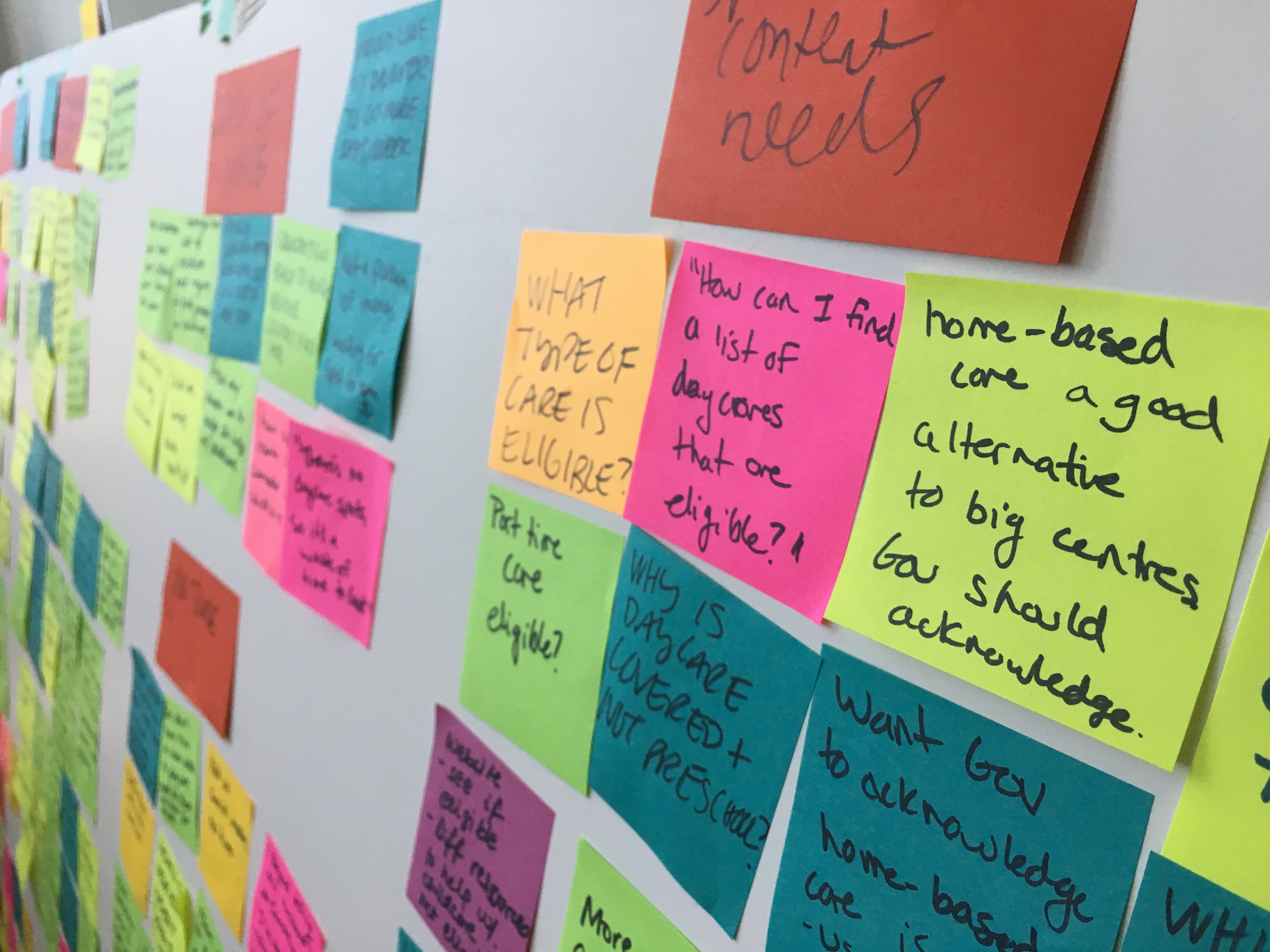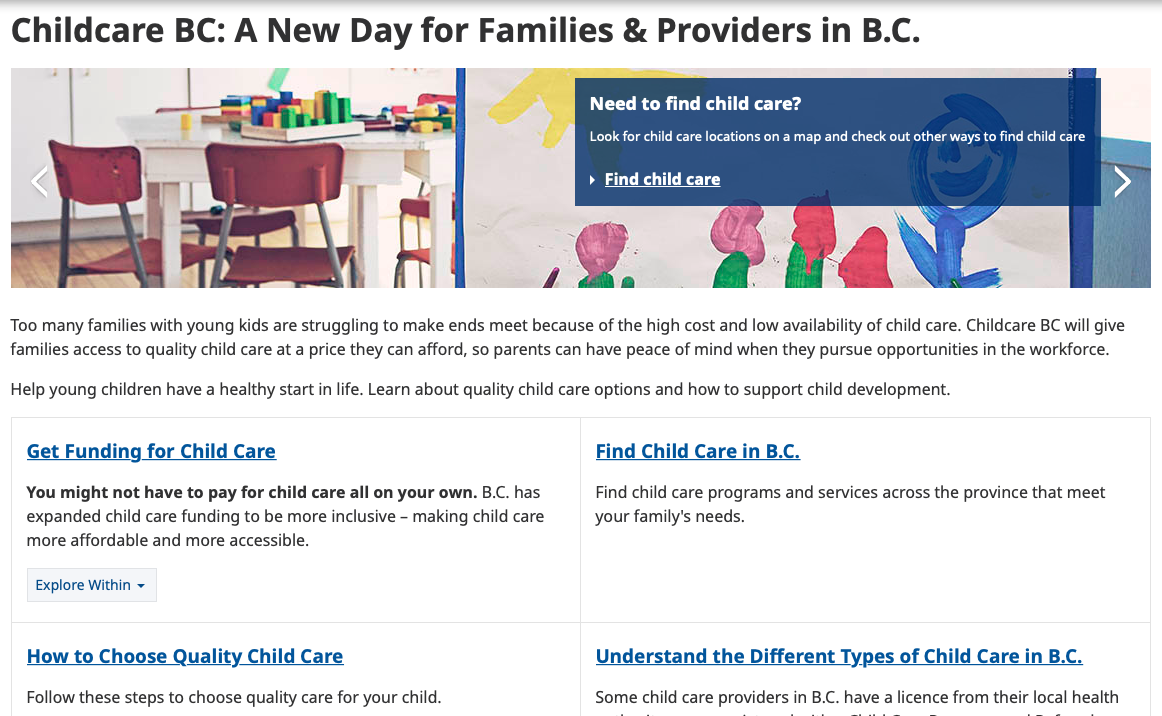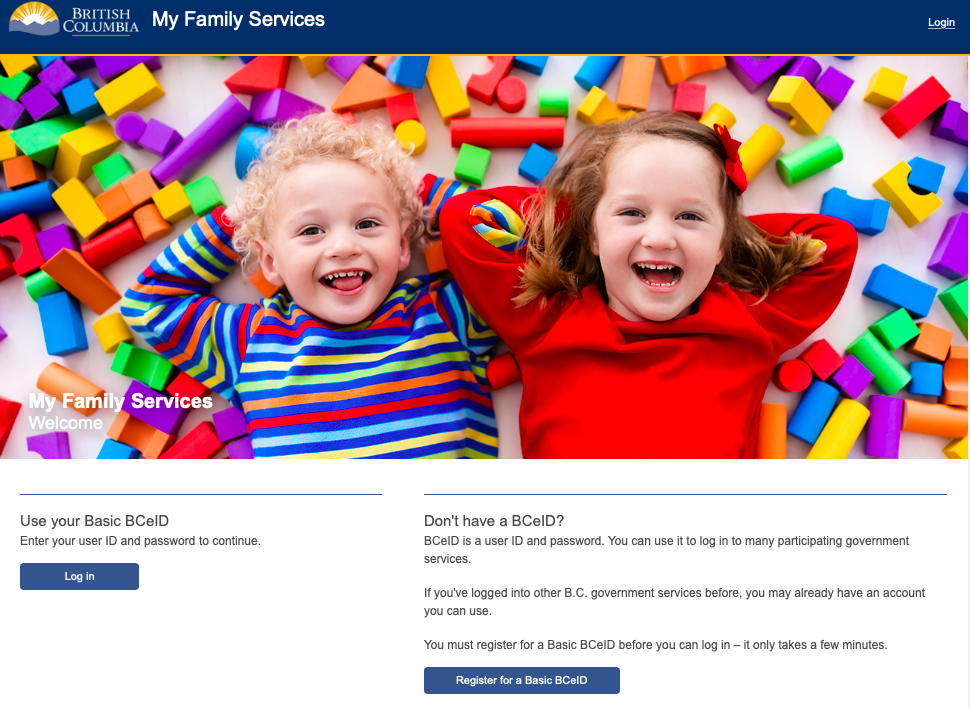Simplified web content for child care funding
Date completed: 2018
Client: Ministry of Children and Family Development
Context and questions
Budget 2018 introduced the ChildCare BC plan and committed more than $1 billion for child care over the first three years of the plan, with universal child care in B.C. as the ultimate goal.
In September 2018 the Ministry of Children and Family Development launched the Affordable Child Care Benefit (ACCB). Households earning up to $111,000 are eligible for the benefit and can receive up to $1,250 a month towards child care fees. The ACCB expanded and replaced the existing low-income child care subsidy program. A key part of the benefit was the launch of a new online portal— My Family Services— where parents can apply and manage their child care funding, digitizing the funding application process.
Our approach
The Ministry of Children and Family Development (MCFD) and the Service Design team worked to understand the needs and behaviours of parents and child care providers to ensure ACCB web content and services were straightforward and useful.
The project included three key phases:
-
Desk and field research. First, the team completed a jurisdictional scan of government child care programs, including Australia and the UK. The team then spoke with 35 people across the Lower Mainland and Vancouver Island, including parents, child care providers, Child Care Resource and Referral staff, and MCFD frontline staff. Interviews focused on how parents find quality child care and how they wanted to receive information from government on the new benefit
- Creation of design principles. Research findings highlighted that parents, child care providers, and frontline staff all faced the same challenges; fragmented information sources, a lack of awareness about the new benefit, and a shortage of time during their day. From these challenges, 13 design principles were created to guide the web content strategy during the prototype phase
- Prototyping and publishing content. Working in tandem with a content strategist, the team completed three rounds of prototype testing with parents, providers and frontline staff, with a focus on Indigenous communities and those new to British Columbia. In the leadup to the September launch, new web content was continually tested and published. In total, the team spoke to 97 people during the project


Outcomes that matter
Accessing a government benefit has impacts beyond service affordability
Research revealed that applying for and using the benefit were not the most challenging steps for families. First, parents had to decide that child care was appropriate for their family and then find care centres with availability in their community. Through this, the team learned that a government service can impact citizens well beyond the amount of financial assistance received.

Research and prototype testing produces better content for all citizens
Through three rounds of prototype testing, the project demonstrated that continued iteration of content and website navigation improved the online experience for parents, child care providers, and frontline staff.
Opportunities can expand project scope
While the team set out to create new web content, research and prototype interviews revealed further areas for improving child care in the province. These included increasing outreach activities with care providers, breaking down technology and literacy barriers for parents, and improving the relationship some families may have experienced with MCFD in the past.
